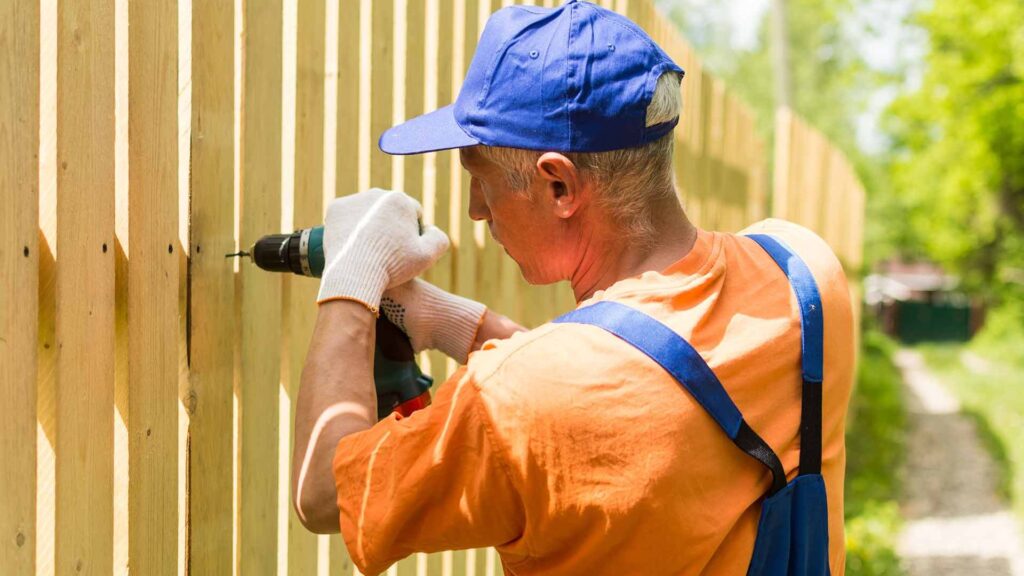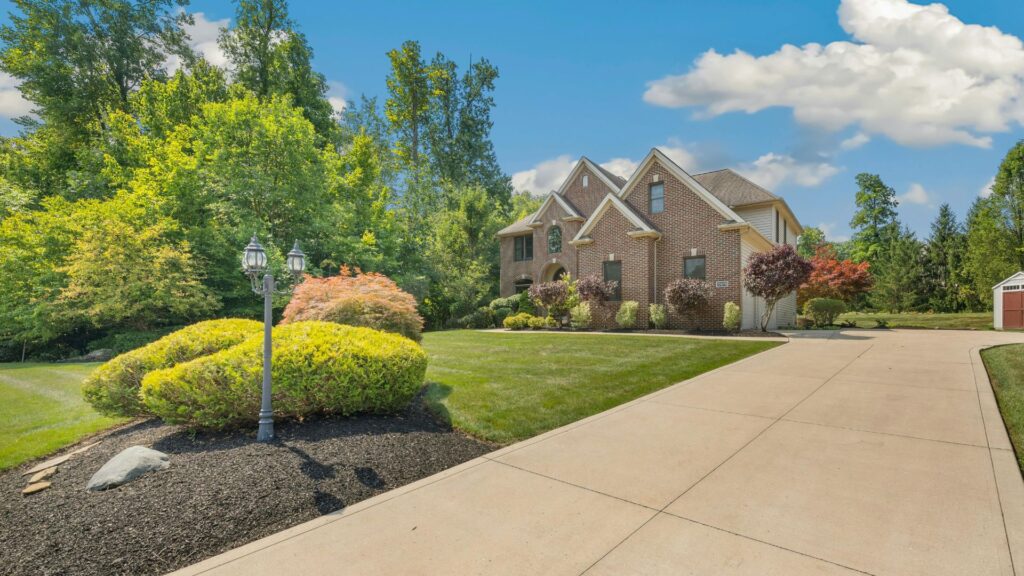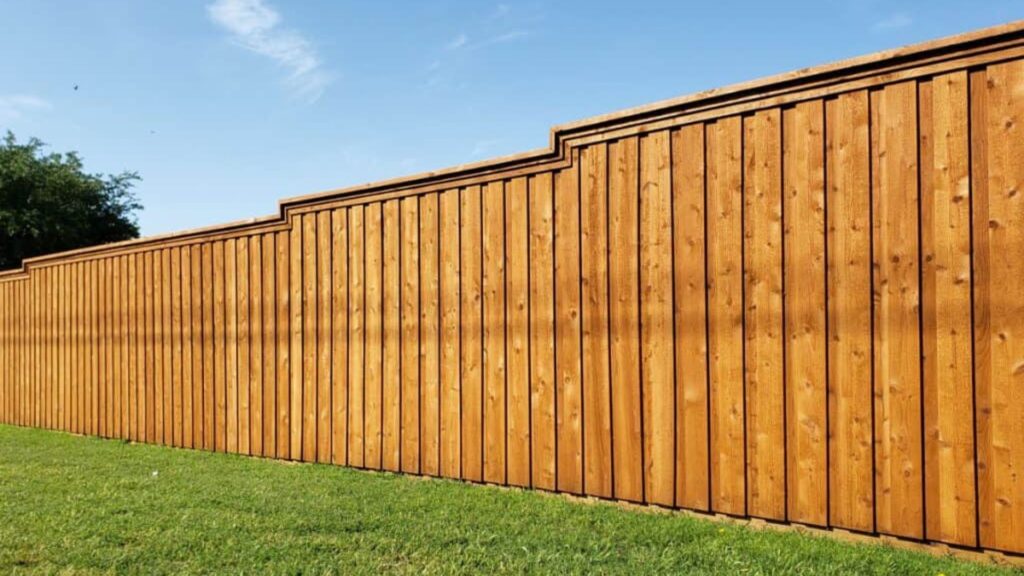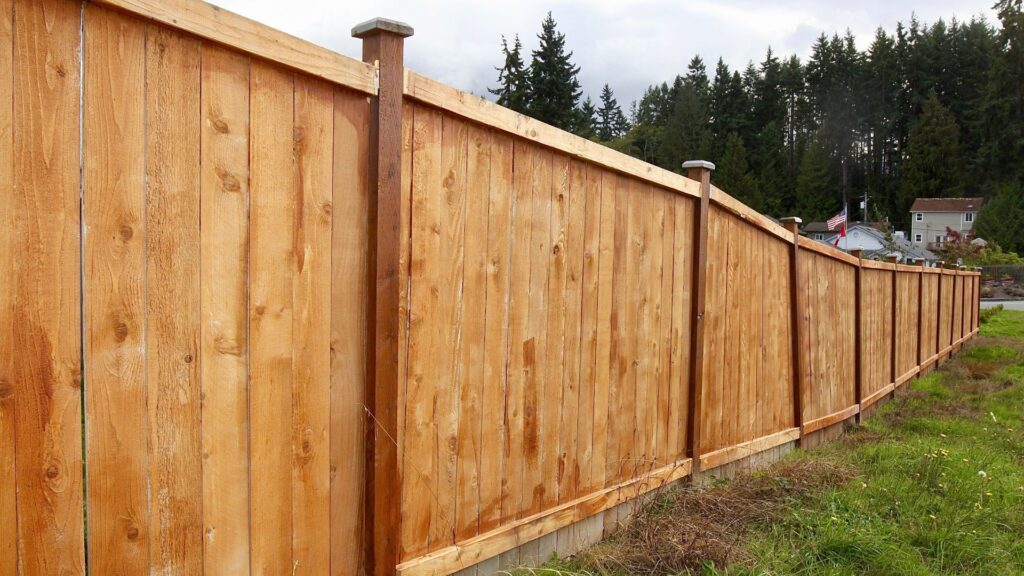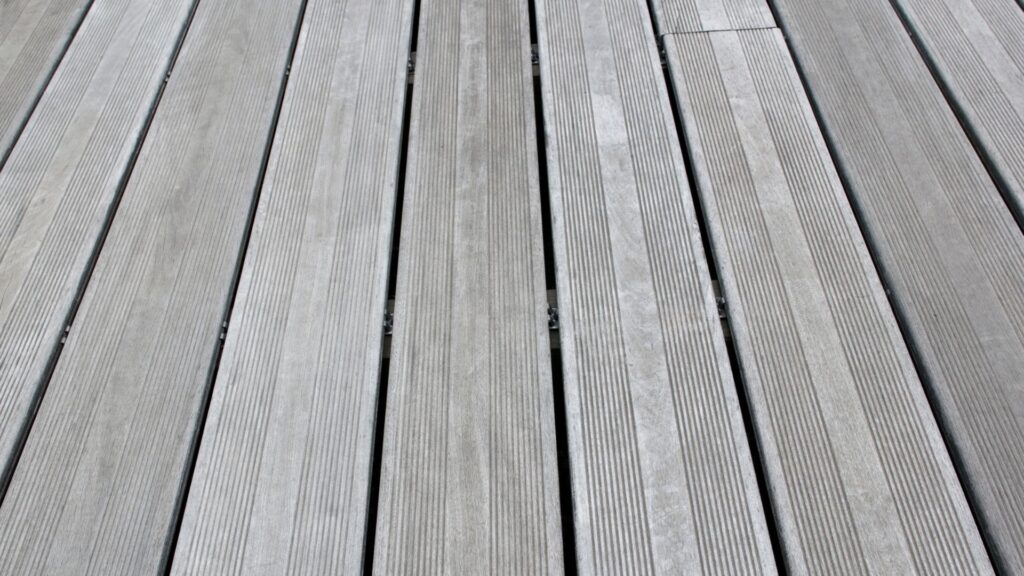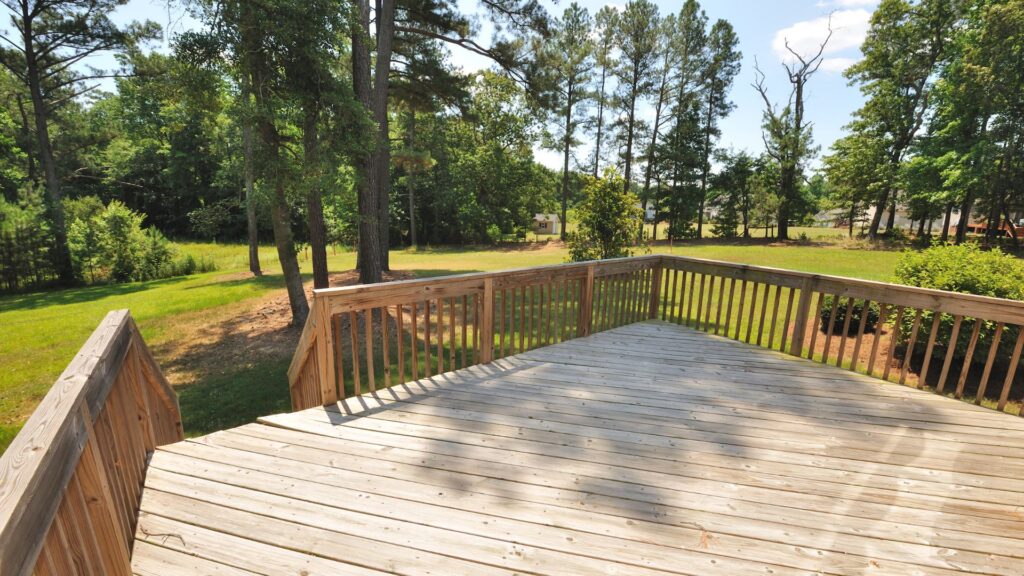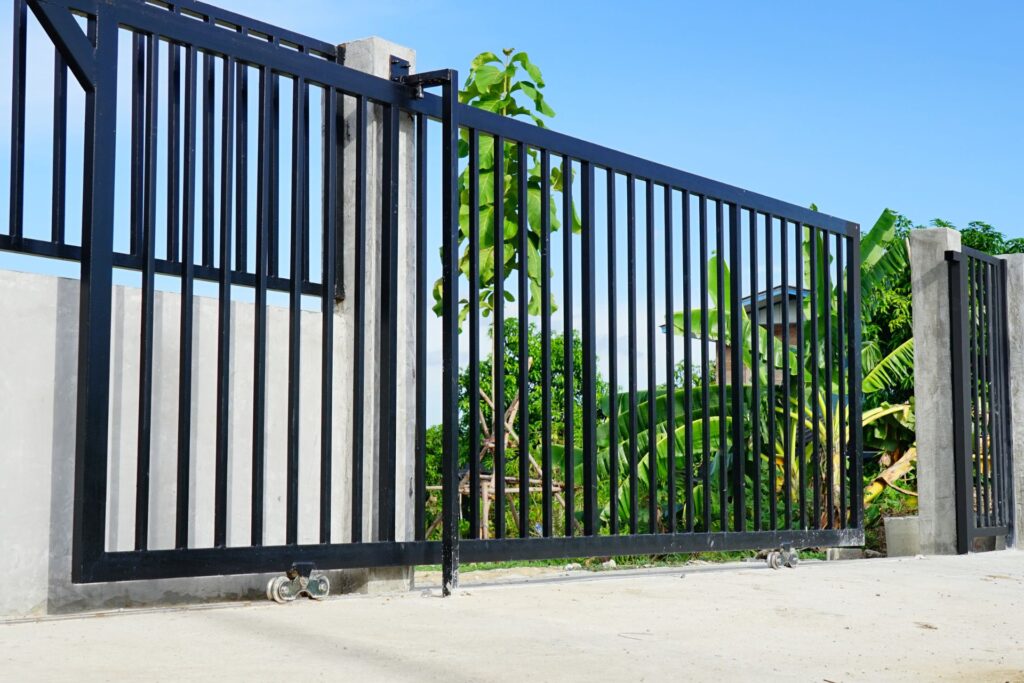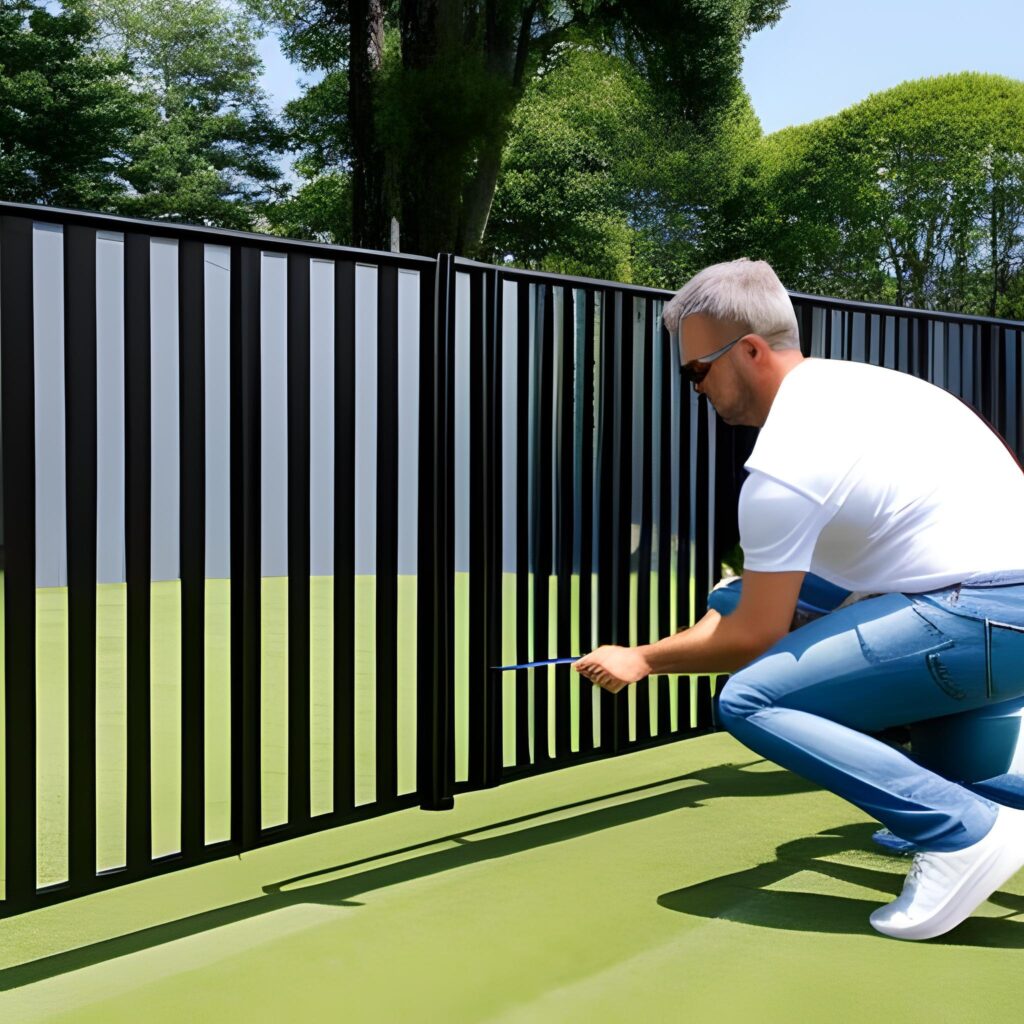Welcome to our comprehensive guide on understanding the labor costs involved in fence installation! Whether you’re looking to enhance your home’s privacy, add security, or simply boost curb appeal, installing a fence is a great way to achieve all three. However, one of the most common questions homeowners face when planning such a project is, “How much will the labor cost?” In this post, we’ll break down the various factors that influence labor expenses, from the type of fence you choose to the specific challenges of your property, and provide you with average cost estimates to help you budget effectively. By the end, you’ll have a clear understanding of what to expect, allowing you to make informed decisions and ensure your fencing project is completed smoothly and affordably.
The cost of labor for fence installation typically ranges from $30 to $60 per hour, depending on factors such as the type of fence material, the size of the area, and local labor rates. On average, homeowners can expect to pay between $10 to $35 per linear foot for labor, with wood and metal fences usually on the higher end due to their complexity, while chain-link fences tend to be more affordable. Additional factors like ground conditions and fence height can also impact overall labor costs.
Table of Contents
Factors That Affect Fence Installation Labor Costs
Fence installation costs can vary widely based on a number of factors. These influences can change the complexity of the installation process, the time it takes to complete the project, and ultimately, the labor expenses. Understanding these factors can help you budget effectively and make informed decisions about your fence installation project. Here’s a breakdown of the key elements that impact labor costs during fence installation.
Type of Fence Material
The material you choose for your fence plays a significant role in determining labor costs. Different materials require varying levels of expertise and time to install.
- Wood Fencing: Wood fences, though aesthetically pleasing and versatile, are generally more labor-intensive to install. Customization, such as cutting the wood to specific sizes and ensuring proper treatment, adds time to the project. As a result, labor costs for wood fencing tend to be higher. The natural material requires precision, especially for decorative designs or uneven terrain.
- Vinyl Fencing: Vinyl fences are often faster to install compared to wood because they come in pre-fabricated panels that are easier to work with. This can reduce the amount of time contractors spend on the job, potentially lowering labor costs. Additionally, vinyl is durable and requires minimal post-installation maintenance, making it a popular choice for those looking to save on long-term expenses.
- Chain-Link Fencing: Chain-link fences are among the quickest to install, but they require precise measurements to ensure the mesh is properly tensioned. While the process may be quicker than wood or vinyl, attention to detail is crucial to avoid sagging or misalignment. The speed of installation may help keep labor costs on the lower side, but the need for accuracy can still influence the final price.
- Metal Fencing: Metal fences, such as wrought iron or aluminum, can vary in labor intensity. While some come in panels, making them easier to install, others might require custom fabrication or welding on-site, driving up labor costs. The weight of the material can also affect how long the installation takes, particularly for more intricate designs.
Fence Height and Length
The size of the fence you want installed has a direct impact on labor costs. Taller fences, or those that span long boundaries, are more labor-intensive and require more materials. For example, a 6-foot fence requires deeper post holes and more structural support than a 4-foot fence, making the process more complex and time-consuming.
Similarly, the length of the fence can increase labor costs. A longer fence requires more posts, panels, and time for installation. Even though materials are a separate cost, the extended work involved in laying out and securing a long fence line will lead to higher labor expenses.
Ground Conditions
The terrain where the fence is to be installed can significantly affect the labor involved. If the ground is rocky, uneven, or sloped, the installation process becomes more challenging, requiring extra time and effort. For instance, rocky soil may need additional digging equipment or manual labor to create post holes deep enough for a sturdy fence.
Slopes present their own challenges, as the fence needs to be installed in a way that follows the contour of the land while remaining level at the top. This often requires custom adjustments to the fence materials, adding more time to the project and driving up labor costs. In contrast, flat, easy-to-dig soil will generally reduce the overall labor required.
Permits and Local Regulations
Local regulations can add complexity to a fence installation project, potentially increasing labor costs. In many areas, permits are required to install a fence, particularly if it exceeds a certain height or is located near property lines. Contractors must follow these guidelines carefully to avoid fines or legal issues, which can slow down the installation process.
Additionally, specific local requirements, such as the type of fence that can be installed or how deep posts need to be set, may increase the amount of labor involved. Contractors may need to take extra steps to comply with these regulations, leading to higher labor expenses. Be sure to check with your local government or homeowners’ association for any rules that might impact your fence installation.
Removal of Existing Fence
If there is an existing fence on your property that needs to be removed before the new one can be installed, this will add to the overall labor costs. The time and effort involved in tearing down an old fence, properly disposing of the materials, and preparing the site for the new installation all contribute to increased labor expenses.
The condition of the existing fence can also affect the cost. If the fence is damaged or embedded deeply in the ground, removal might take longer and require specialized tools. Clearing the site of any debris or leftover materials further adds to the overall labor.
Location/Region
Labor costs can also vary significantly depending on your location. In urban areas, where the cost of living is higher, you may pay more for labor due to increased contractor wages. Additionally, the demand for contractors in these areas can be higher, which might influence pricing.
On the other hand, in rural areas, labor costs may be lower due to a lower cost of living and a different contractor market. However, if your property is in a remote location, you may incur additional costs for travel time and transportation of materials, which can offset the lower labor rate.
When planning a fence installation, it’s important to consider these key factors that influence labor costs. The type of material, the size of the fence, the condition of the ground, local regulations, and the removal of existing fences all contribute to the final labor expense. Understanding these factors can help you budget effectively and make informed choices to suit your needs and financial plans.

Average Labor Costs For Fence Installation
When planning a fence installation, labor costs play a significant role in the overall project expense. Understanding the average labor rates and how they vary based on fence type can help homeowners make informed decisions. Let’s dive into the key factors that influence labor costs for fence installation across the United States.
National Average Labor Rates
Labor rates for fence installation vary across the country, typically ranging from $30 to $60 per hour. The specific rate you’ll pay depends on several factors, including location, the complexity of the job, and the contractor’s experience. In urban areas with a higher cost of living, you may be closer to the upper end of this range. In rural or less densely populated regions, labor costs tend to be lower. However, it’s important to note that specialized labor or intricate fence designs can drive costs up, regardless of location.
Cost by Fence Type
Labor costs aren’t just influenced by the national average rates—they can also vary widely depending on the type of fence you’re installing. Below is a breakdown of common fence types and their respective labor cost estimates.
Wood Fencing
Wood fences, while popular for their aesthetic appeal, tend to be more labor-intensive. This is primarily due to the need for custom cuts and precise post-setting, especially with designs like picket or privacy fences. The installation process involves more manual effort and can be time-consuming, which is why labor costs for wood fencing are typically higher.
- Labor Cost Estimate: $10 to $30 per linear foot.
Vinyl Fencing
Vinyl fences are often easier to install than wood, as they come in pre-assembled panels. However, they may require more specialized labor, particularly for ensuring proper alignment and durability over time. While vinyl installation is generally more straightforward, the need for precision in handling the material can increase labor costs slightly compared to simpler fencing options.
- Labor Cost Estimate: $15 to $25 per linear foot.
Chain-Link Fencing
Chain-link fences are known for their relatively quick and easy installation process. Their design is less complex, and the materials are lighter, meaning less physical labor is required to complete the job. This makes chain-link fencing one of the more affordable options when it comes to labor costs.
- Labor Cost Estimate: $7 to $15 per linear foot.
Metal or Aluminum Fencing
Metal and aluminum fences, while durable and stylish, require a higher level of precision during installation. Each panel or section must be carefully aligned, and the process often involves more detailed measurements and securing methods. As a result, labor costs for metal and aluminum fencing are typically higher than for other types of fences.
- Labor Cost Estimate: $20 to $35 per linear foot.
Full Breakdown of Costs (Labor vs. Materials)
When estimating the total cost of a fence installation project, it’s crucial to understand how labor costs compare to material expenses. In many cases, labor can account for 50-70% of the total project cost. For example, if you are installing a wood fence that costs $15 per linear foot in materials and $20 per linear foot in labor, your total cost per linear foot would be around $35. For a 100-foot fence, this amounts to $3,500, with $2,000 of that being labor costs and the remaining $1,500 covering materials.
This division can vary depending on the complexity of the installation and the type of fence. Simpler installations, like chain-link fencing, may see a lower percentage of labor costs, while more intricate fences, such as metal or custom wood designs, may have higher labor-related expenses.
Impact of DIY vs. Hiring a Professional
For homeowners looking to cut costs, a DIY fence installation can be an attractive option. By tackling the project yourself, you can save significantly on labor costs, which typically make up the majority of the expense. However, DIY installations come with challenges. Without the proper tools, skills, or experience, you may not achieve the same quality results as a professional contractor. Mistakes during installation can lead to costly repairs or replacements in the long run.
On the other hand, hiring a professional ensures that your fence is installed correctly, in compliance with local codes, and built to last. While this route involves higher upfront labor costs, the long-term benefits often outweigh the immediate savings of a DIY approach. Plus, a professionally installed fence can add value to your property, making it a sound investment.
In summary, the average labor costs for fence installation can vary based on factors like location, fence type, and complexity of the project. National labor rates typically fall between $30 and $60 per hour, while labor costs per linear foot depend on the fence material. Homeowners must weigh the potential savings of DIY installation against the benefits of hiring a professional to achieve lasting results. Understanding these factors will help ensure you budget appropriately for your fence installation project, making the best decision for your home and property.

How To Save On Labor Costs For Fence Installation
Installing a fence can be a significant investment, and a large part of the cost comes from labor. While it’s essential to ensure quality workmanship, there are practical ways to save on labor costs without compromising on the end result. Here are a few strategies to help you cut down on labor expenses when installing your fence.
Get Multiple Quotes
One of the most effective ways to save money on labor for fence installation is by getting multiple quotes. Aim for at least three quotes from different contractors to ensure you’re receiving competitive pricing. Contractors often have varying pricing structures, and by comparing quotes, you’ll have a clearer understanding of the market rates. Plus, when contractors know they’re competing for your business, they’re more likely to offer their best prices.
Keep in mind that the lowest bid isn’t always the best choice. You’ll want to consider the contractor’s reputation, experience, and reviews from previous customers to ensure you’re getting value for your money. Sometimes paying a bit more for quality labor can save you from costly repairs down the road.
Timing Matters
The time of year you choose to install your fence can significantly impact labor costs. Fence installation tends to be in higher demand during the spring and summer months when the weather is ideal. During these peak seasons, contractors are often booked solid, and labor prices may rise as a result of higher demand.
However, if you opt to have your fence installed during the off-peak season, such as in fall or winter, you might be able to secure a lower rate. Contractors are more likely to offer discounts during these slower months to keep their crews busy, and you’ll often find reduced labor costs during this time. Be mindful of weather conditions in your area, but if feasible, scheduling during the off-season can lead to substantial savings.
Consider Partial DIY
If you’re looking to further reduce labor costs, consider taking on some of the preliminary work yourself. You don’t necessarily need to install the entire fence, but tasks like clearing the site of debris, bushes, or old fencing can help cut down the time the contractor spends on the job. Removing obstacles and preparing the site can make the installation process smoother and faster, which can result in reduced labor charges.
Additionally, if there are smaller tasks that don’t require specialized skills or equipment, such as painting or staining the fence after it’s been installed, you can handle these yourself to save even more. By combining professional expertise with your own efforts, you can lower your overall installation costs.
Use Pre-Fabricated Panels
Another way to save on labor costs is by opting for pre-fabricated fence panels. These panels are pre-assembled sections of fencing, which means they can be installed much faster compared to building a fence from individual pieces on-site. This not only reduces the amount of time your contractor spends on the project but also simplifies the installation process, which can further cut down on labor costs.
Pre-fabricated panels are available in a variety of styles and materials, so you can still achieve the aesthetic you’re looking for while keeping installation costs more affordable. Just be sure to measure your yard properly and select panels that fit your needs, as custom adjustments to pre-fabricated panels could offset the savings.
Fence installation doesn’t have to break the bank. By getting multiple quotes, considering the timing of your project, taking on some of the prep work yourself, and choosing pre-fabricated panels, you can significantly reduce labor costs while still achieving a high-quality installation. Each of these strategies can help you save without compromising the overall look and functionality of your new fence.
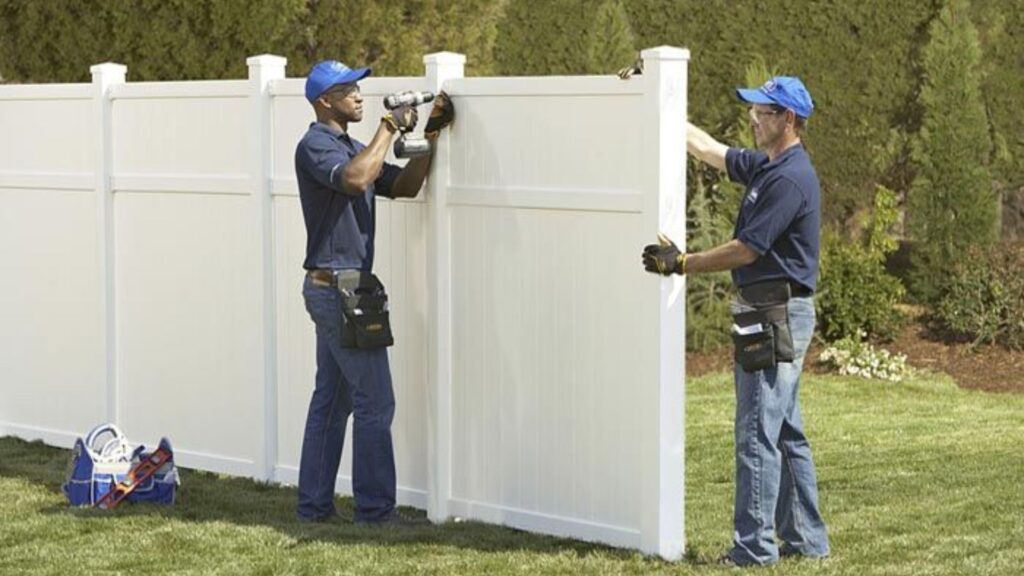
What To Expect From A Fence Installation Labor Quote
When getting a quote for fence installation, it’s essential to know exactly what you’re paying for and what’s included in the service. Fence installation involves more than just putting up panels, and understanding the details of a labor quote can help you avoid surprises and make an informed decision.
Labor-Only vs. Full-Service Quotes
One of the first things to clarify when receiving a fence installation quote is whether it’s for labor-only or a full-service installation. A labor-only quote covers just the work the installers will perform, such as digging holes, setting posts, and attaching fence panels. This type of quote does not include the cost of materials like fence posts, panels, or hardware, so you’ll need to purchase these separately.
On the other hand, a full-service quote typically includes everything: labor, materials, permits, and even post-project clean-up. Full-service quotes are more comprehensive and often convenient for homeowners who don’t want to worry about sourcing materials or dealing with permits. Be sure to ask what type of quote you’re receiving so that you can compare accurately across different contractors.
What’s Included in the Labor Fee
A well-prepared labor quote should outline the specific tasks that will be performed. Here are some typical labor tasks that should be included in your fence installation quote:
1. Digging post holes – This involves preparing the ground and digging holes for fence posts, which can vary in depth depending on the type of fence you’re installing.
2. Installing posts – Once the holes are dug, posts need to be leveled, set in concrete, or secured in a way that ensures the fence remains sturdy.
3. Attaching fence panels – After the posts are in place, the panels or pickets are attached to create the fence structure.
4. Clean-up – Some labor quotes may include clean-up services such as hauling away dirt, rocks, or other debris left over from the installation process. This step ensures your yard is left in good condition after the fence is installed.
Make sure that all of these essential tasks are clearly spelled out in your quote to avoid misunderstandings.
Hidden Labor Costs
It’s important to watch out for hidden labor costs that can add up quickly if you’re not aware of them. One common hidden cost is debris removal. While some contractors include this in their quote, others may charge extra for hauling away dirt, old fence material, or rocks that were unearthed during digging.
Another potential hidden cost is related to difficult terrain. If your yard has uneven ground, rocky soil, or other obstacles that make installation harder, contractors may charge additional fees for the extra effort or equipment needed to complete the job.
Ask your contractor upfront if any extra charges may apply based on your yard’s condition to avoid unexpected fees.
Negotiating the Quote
Finally, don’t be afraid to negotiate the labor quote. Many contractors are open to adjusting their fees, especially if you’re offering repeat business. For example, if you plan to install a gate or add additional fencing in the future, mention this to the contractor. They might be willing to provide a discount on the labor fee if they know more work is coming their way.
You can also ask if there are any seasonal discounts or promotions they’re running. Sometimes, fence companies offer lower rates during their off-season to keep their crews busy.
In conclusion, understanding what’s included in a fence installation labor quote, potential hidden costs, and how to negotiate can save you money and ensure a smooth installation process. Always clarify the details upfront and make sure everything is in writing to avoid any unexpected expenses or complications down the line.

FAQs: About How Much Is Labor For Fence Installation
How much does labor for fence installation typically cost?
Labor for fence installation generally costs between $30 to $60 per hour. However, many contractors charge by the linear foot, with rates ranging from $10 to $35 per linear foot depending on the type of fence, materials used, and other factors like terrain and location.
What factors affect the cost of labor for fence installation?
Several factors influence labor costs, including the type of fence material, the size and height of the fence, ground conditions (e.g., rocky or uneven terrain), whether the site needs preparation, the removal of an old fence, and regional differences in labor rates.
Is it cheaper to install a fence yourself or hire a professional?
Installing a fence yourself can save on labor costs, but it requires time, effort, and specific tools. Hiring a professional ensures expert installation and can save you from potential issues or mistakes, particularly for complex or large projects. The choice depends on your skills and the scope of the project.
How long does it take to install a fence?
The time it takes to install a fence varies based on the size of the area, fence type, and any complexities such as slopes or difficult soil. On average, a typical residential fence installation takes 2 to 5 days to complete, depending on these factors.
What are the most labor-intensive types of fences to install?
Wood and metal fences tend to be more labor-intensive due to custom cuts, post-setting, and the need for precision during installation. Vinyl fences are generally easier and faster to install, while chain-link fences are among the quickest and least labor-intensive.
Should I get multiple quotes for fence installation?
Yes, it’s highly recommended to get at least 3 quotes from different contractors. This ensures you receive competitive pricing and helps you evaluate each contractor’s experience, reputation, and the scope of work they offer.
What is included in labor costs for fence installation?
Labor costs typically include tasks such as digging post holes, setting posts in concrete, attaching the fence panels, clean-up, and sometimes debris removal. Be sure to clarify with your contractor what is included in their labor fee and whether there are any additional charges.
Can I reduce labor costs for fence installation?
You can reduce labor costs by preparing the site in advance (e.g., clearing debris or removing an old fence) or by choosing simpler fence designs like chain-link. Another way to save is by installing the fence during the off-season when demand for contractors may be lower.
Are labor costs different for different types of fence materials?
Yes, labor costs vary depending on the type of fence. For example, labor for installing wood fences is typically more expensive due to the customization involved, while chain-link fences tend to be more affordable as they are quicker and easier to install.
Do I need to tip fence installers?
Tipping fence installers is not required but is appreciated, especially if the installers went above and beyond or if you’re particularly satisfied with the service. A good tip is usually around $20-$50 per installer, but it ultimately depends on your discretion.
Conclusion
In conclusion, understanding the key factors that affect labor costs for fence installation is crucial when planning your project. These factors include the type of material, the size of the area, terrain challenges, and local labor rates, all of which can significantly influence the overall price. To move forward, consider reaching out to local contractors for personalized quotes tailored to your specific needs or, if you’re considering a DIY approach, be sure to assess the complexity of the project carefully. Ultimately, while labor costs may vary, investing in the right fence can enhance both the value and enjoyment of your property for many years, making it a decision well worth considering.
About the Author:
Mike Veail is a recognized digital marketing expert with over 6 years of experience in helping tradespeople and small businesses thrive online. A former quantity surveyor, Mike combines deep industry knowledge with hands-on expertise in SEO and Google Ads. His marketing strategies are tailored to the specific needs of the trades sector, helping businesses increase visibility and generate more leads through proven, ethical methods.
Mike has successfully partnered with numerous companies, establishing a track record of delivering measurable results. His work has been featured across various platforms that showcase his expertise in lead generation and online marketing for the trades sector.
Learn more about Mike's experience and services at https://theleadguy.online or follow him on social media:

